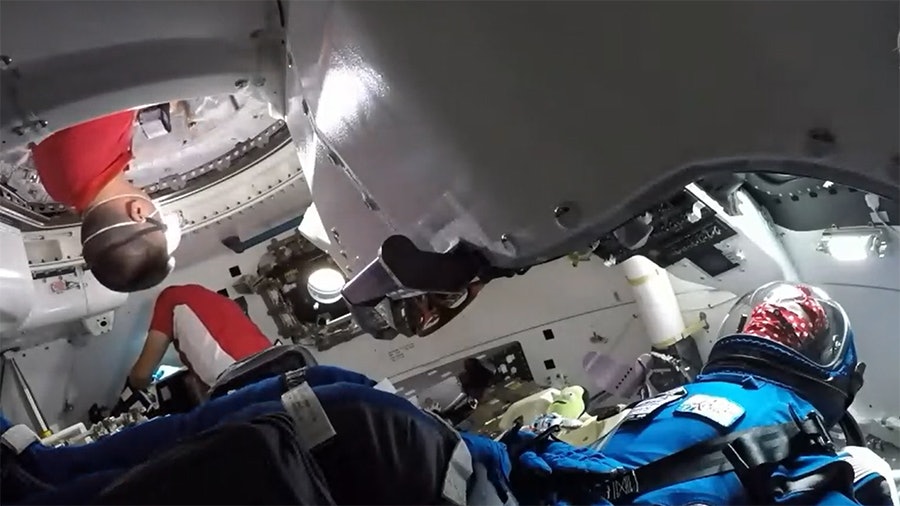
Genetically-engineered food is both a bete noir and a saving grace, depending on whom you ask. Some people believe engineering our food to be better for us — both nutritionally and in terms of production — is against nature, and thus antithetical to a more pure, more “natural” way of feeding ourselves and the animals we depend on. But others see the sheer potential in altering food to bolster its nutritional qualities and feed more people well, that they pursue these technological advances in the face of the criticism.
And now, a team of researchers debut a new innovation: A genetically-engineered tomato that could help solve a vitamin deficiency crisis that affects about one in seven people worldwide.
HORIZONS explores the innovations of today that will shape the world of tomorrow. This is an adapted version of the May 23 edition. Forecast the future by signing up for free.
What’s new — In a study published Monday, May 23, in the journal Nature Plants, researchers describe how they created a tomato rich in vitamin D — specifically, vitamin D3, which is the same variety of the vitamin the body creates when you expose your skin to sunlight.
About a billion people across the globe are deficient in vitamin D. That lack can cause a host of mental and physical symptoms, including mood changes, depression, muscle weakness, fatigue, bone aches, and more. It is also linked to cancer and dementia.
“Tomato could be developed as a plant-based, sustainable source of vitamin D3.”
Because it is so vital — and because so many people don’t get enough vitamin D — certain foods are fortified with the vitamin, like cereal or milk, while fish is typically rich in vitamin D. But these foods are also not the most sustainable. In turn, people who eat a plant-based diet may miss out most, as vegetables and fruit are among the worst dietary sources of vitamin D.
Typically, food producers add vitamin D in during the production process. This tomato cuts out that step: It is designed using genome-editing to accumulate vitamin D as it grows. Previously, scientists knew that tomatoes synthesized D3 in their leaves. By manipulating the plant’s genes to replicate this process in the fruit, the researchers behind the new study argue their plant could help nourish people with too little vitamin D, regardless of their dietary habits.

How they did it — To alter the plant, the researchers tweaked genes encoding for a protein known as 7-dehydrocholesterol reductase using CRISPR gene-editing technology to exploit a molecular pathway to make 7-DHC, essentially vitamin D3, in tomato leaves on exposure to sunlight. In the engineered plants, the fruit and leaves hoarded the vitamin D3 precursor, but they also showed no change in their growth or yield.
“Editing of Sl7-DR2 could generate similar alterations in any elite tomato variety, meaning that tomato could be developed as a plant-based, sustainable source of vitamin D3,” the researchers state in the study.
Ultimately, the researchers managed to produce a 8-10 gram ripe tomato that carried 20 percent of a person’s recommended vitamin D allowance.
Treating the plants with sunlight exposure after harvest also enhanced vitamin D levels in the fruit — offering another way to supplement a plant-based diet with vitamin D.
“The study by Li et al. provides a leap forward in decreasing our dependence on animal-based foods, as it illustrates how plant metabolism can be redirected towards provitamin D3 enrichment... Besides the fruits, extracts of [sunlight]-treated leaves of engineered cultivars (containing as much as 200 μg previtamin D3 per gram dry weight, tenfold the recommended daily intake) could be used as vitamin D3 supplements for vegans,” write Dominique Van Der Straeten and Simon Strobbe, of the Laboratory of Functional Plant Biology at Ghent University, in an accompanying viewpoint.
On the horizon...

One of the most irritating (and dangerous) aspects of driving a car is getting a tire puncture — particularly if you are nowhere near an autoshop and you don’t carry a spare. For cars of the future, however, punctures may be no problem — because tires will no longer need air.
The innovation is being led by Goodyear, a company that has designed tires that look like they have lots of little spokes, essentially creating a mesh-like structure, rather than being filled with air. Goodyear currently makes traditionally designed tires, but as the company’s engineer Michael Rachita recently said in an interview, an airless tire “will never run flat, you could drive over any nail and expect not to lose performance.”
The first vehicles to be fitted with Goodyear’s airless tires will be trucks, according to the company. Tire manufacturer Michelin has an airless tire option, too — the Tweel — which it offers for industrial vehicles like forlifts and UTVs. Michelin is also developing an airless tire for cars, called Uptis.
Goodyear predicts its airless tires will become widely available by the end of the decade, according to an AFP report published on TechXplore.com. As the report suggests, a tire designed to last the entirety of a car’s lifetime would reduce waste and increase sustainability.
See it to believe it

Boeing’s CST-100 Starliner capsule synced up with the International Space Station on May 21, 2022. In the above image, astronauts Bob Hines and Kjell Lindgren can be seen in red saying “hello” to Boeing’s test dummy, Rosie, in blue. In time, NASA hopes to use Boeing’s Starliner alongside SpaceX’s crafts to carry cargo and ferry astronauts to the International Space Station and any future space stations as part of the Commercial Crew program.
Read more about Boeing’s test flight here.
T-minus the internet…
5. Elon Musk’s Tesla was booted from the S&P 500 ESG [environment, social, governance) Index — an index that tracks how socially responsible a company is for investors. Surprisingly, as The Observer observes, Exxon, a global fossil-fuel producer, remains on the index.
4. Climate activitists are using TikTok to tackle “climate doomism,” according to a new BBC report. The idea is to change the narrative on climate change from a losing battle to a war we can win.
3. Students at Johns Hopkins University have a delectable solution to the drip from an oversauced burrito. They call it Tastee Tape, although details on the actual taste are scant — Axios has more.
2. Activision workers are voting on whether or not to form a union, The New York Times reports. The outcome could be historic for the gaming industry in the U.S.
1. If you live in rural America, internet signal isn’t a given. Our sister magazine, Input, has some suggestions, however — including Starlink.
Beyond the horizon…

Look out for updates from the European Space Agency and the Living Planet Symposium, which is taking place this week between May 23 and May 27 in Bonn, Germany. The symposium zooms in on the planet we know best — Earth. With scientific sessions spanning topics as diverse as atmospheric science, climate change, polar science, and security, there is a lot of science meat to dig into here.
For those of us who can’t attend in person, the best way to get a fuller picture of our changing planet and how the European Space Agency and others are both responding to these pressures and engaging in new discoveries, check out their climate resource page and the Explorer missions’ latest results.
This has been HORIZONS, a newsletter that explores the innovations of today shaping the world of tomorrow.
Do you think it can be improved? Have a story idea? Send your tips and all other musings to horizons@inverse.com







